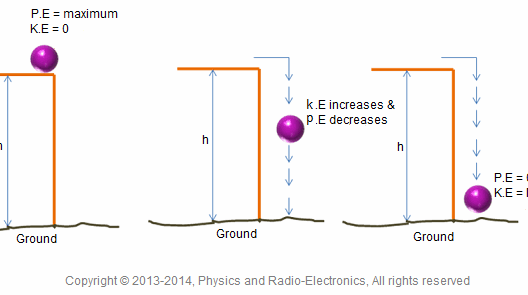Space, often perceived as an emporium of silence and solitude, harbors more than cosmic dust and celestial bodies; it encapsulates the fundamental laws of nature, particularly the preservation of energy. One cornerstone of classical mechanics is the principle of kinetic energy and its conservation in closed systems. However, when we traverse beyond our terrestrial confines and into the vastness of space, questions emerge: Is kinetic energy truly conserved in this otherworldly arena? Can we perceive it through the lens of cosmic interactions? To navigate these inquiries, one must delve into the realms of physics, astrophysics, and philosophical contemplation.
First, it is paramount to establish a foundational understanding of kinetic energy. This form of energy is defined as the energy possessed by an object due to its motion. Mathematically, it is expressed as KE = 1/2 mv², where ‘m’ denotes mass and ‘v’ represents velocity. In the tranquil theater of space, devoid of friction and atmospheric resistance, objects can maintain their speed indefinitely, suggesting an alluring conservation of kinetic energy. Yet, this is where nuances arise.
In the vacuum of space, the concept of conservation of energy flourishes amidst a backdrop of celestial orchestration. Consider two spacecraft, silently gliding toward one another under the influence of gravity. As they approach, each vessel’s kinetic energy becomes interwoven with gravitational potential energy. The kinetic energy of the approaching craft changes as they draw closer, converting momentum into potential energy, and vice versa upon their reciprocal motion. This dynamic interplay recalls the tender dance of partners in a cosmic ballroom, where energy shifts seamlessly from one form to another, perpetuating a harmonious balance.
Moreover, the overarching principle of conservation of momentum further elucidates the kinetic energy discourse in space. According to Newton’s third law, when two bodies collide, the momentum before and after the collision remains constant unless acted upon by an external force. In the vast expanse of the cosmos, where vast distances render such ‘external forces’ almost negligible, this principle shines brightly. When celestial bodies such as asteroids collide, they undergo a transformation—kinetic energy shifts, some dissipates as heat and sound (the latter being a delightful irony, as sound does not propagate in the vacuum of space), while other portions can lead to complex outcomes like fragmentation and reassembly, modulating kinetic energy in an elaborate cosmic symphony.
Yet, conservation of kinetic energy in space is not merely a tale of physical laws; it metamorphoses into a philosophical musing when considering the fate of celestial bodies. When stars explode in supernovae, their explosive kinetic energy releases an unfathomable amount of energy into the cosmos. This event not only marks the dissolution of one entity but also catalyzes the birth of new ones, from neutron stars to black holes. Herein lies an intriguing paradox: while kinetic energy appears to be lost within the dazzling spectacle, it is, in fact, transformed and redistributed throughout the universe, showcasing a fascinating cycle of rebirth that echoes the conservation laws.
One must also consider dark matter and dark energy, which constitute a significant portion of the universe’s mass-energy content yet elude direct observation. Their existence complicates the narrative of kinetic energy conservation. If these enigmatic components influence the expansion of our universe and the motion of galaxies, could they also play a role in the kinetic energy balance? The quest to decipher their interaction with conventional matter adds a layer of intrigue, posing questions about energy behavior on a cosmic scale.
Furthermore, the concept of relativistic effects is paramount when considering high-velocity objects in space. When entities approach the speed of light, as dictated by Einstein’s theory of relativity, kinetic energy transcends its classical definition. The closer an object reaches light speed, the more energy it requires to continue accelerating. At this threshold, the conservation of kinetic energy morphs, illustrating the limitations imposed by relativistic frameworks. This concept serves as a humbling reminder that even in a realm governed by apparent conservation laws, there are boundaries dictated by the cosmos itself.
Another dimension worth pondering is the anthropogenic impact on space. As humanity ventures further into this cosmic domain, the kinetic energy from human-made objects—satellites, spacecraft, and even space debris—introduces considerations of sustainability. The addition of artificial elements into this vastness alters the energy landscape and its conservation cycles. Understanding these influences is crucial for future endeavors in space exploration, where the implications of kinetic energy conservation and its violations could have fluttering consequences on the delicate balance of space ecology.
In conclusion, the question of whether kinetic energy is conserved in space leads us down a labyrinthine path filled with intricate dynamics, philosophical reflections, and uncharted scientific territories. It invites contemplation on how energy transforms, guides celestial dances, and influences the cyclical nature of existence across the universe’s vast tapestry. As each particle and celestial body engages in a symphony of motion, one cannot help but marvel at the elegant choreography wherein kinetic energy, while fundamentally conserved, reveals its ability to metamorphose—an eternal testament to the essence of the cosmos, enigmatic and beautiful as it unfurls its mysteries across the cosmic void.








